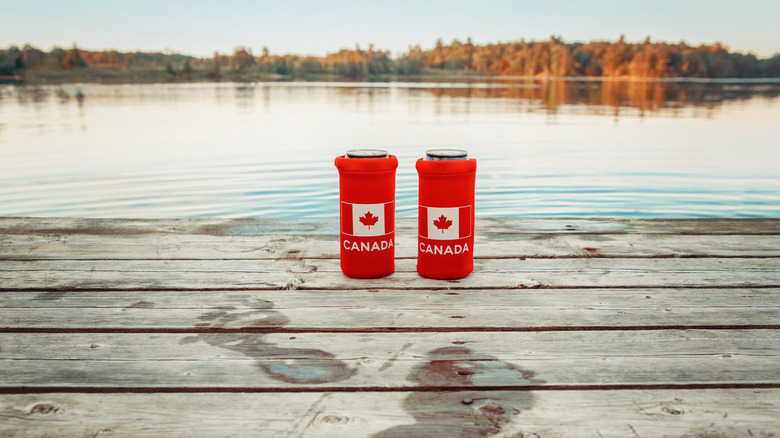Canada's Alcohol Guidance Seriously Lowers Recommended Consumption
In Canada, people crack open a cold one the same way Americans do. Folks commonly drink at weddings, birthdays, and while watching sporting events, says Dr. Erin Hobin, a senior scientist with Public Health Ontario, via the BBC; if you've ever attended any of these activities yourself, this information might seem like a given. But, now Canadians might consider cutting back as Canada's new alcohol guidance seriously lowers recommended consumption. The amount that the government is recommending folks cut back might come as a bit of a shock to the estimated 80% of Canadian adults who drink. The last update to the guidelines was published in 2011, and it recommended a maximum of 15 drinks a week for men and 10 drinks a week for women. Now, according to the Canadian Centre on Substance Use and Addiction (CCSA), any more than two drinks per week is too many.
According to the Government of Canada's website, the Canadian "standard drink" contains 13.45 grams of pure alcohol. It's a specific measure of a drink's alcohol level, but it's the equivalent of what constitutes a "standard drink" in the United States: 12 fluid ounces of beer (excluding IPAs), 5 fluid ounces of wine, and 1½ fluid ounces of liquor, via the National Institute on Alcohol Abuse and Alcoholism. Per Canada's new drinking guidelines, if you walk into your favorite neighborhood dive and order a beer and a shot, you've already hit your drinking limit for the day.
Unrealistic or a shift toward mindful consumption?
To produce their new standards, the CCSA synthesized the findings of thousands of 6,000 studies linking alcohol and various types of cancer. Per the organization's 90-page report, having a third or fourth drink within the span of just one week increases people's risks for certain types of cancer like colon cancer and breast cancer. Drinking less can also improve sleep, and lower your risk of injuries, and violence.
As the Centre explains in a flyer about the new guidelines, "Each additional standard drink radically increases the risk of alcohol-related consequences."
While the regulation might seem like a white-knuckled move on the Canadian government's part, it's worth noting that U.S. guidelines advise against any more than two drinks a day for men and one for women.
Admittedly, not every consumer is likely to follow these strict new guidelines, but they do pose a threat to bars that have already been ravaged by the COVID-19 pandemic and the annual sales drop accompanying "Dry January." In 2020, Eater reported that Dry January tends to cut regular bar sales by at least 20%. But, in 2021, finance trend analytics platform Marketplace reported that nonalcoholic beverages saw a sales uptick large enough that many bars' overall profit margins were not greatly affected by Dry January. As an alternative offering, says the CBC, a slew of new non-alcoholic and low-ABV offerings have hit the market in light of Canada's new regulations. Perhaps Canada's guidelines reflect a move not away from alcohol altogether but toward a more health-minded approach to drinking.

